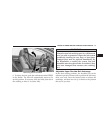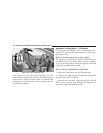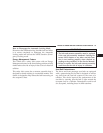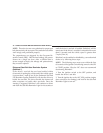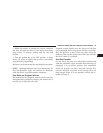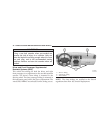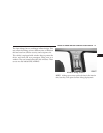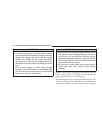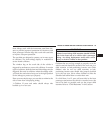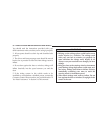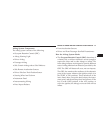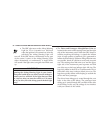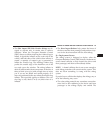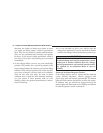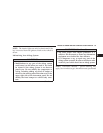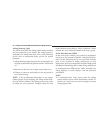
front airbags work with the instrument panel knee bol-
sters to provide improved protection for the driver and
front passenger. Window bags also work with seat belts
to improve occupant protection.
The seat belts are designed to protect you in many types
of collisions. The front airbags deploy in moderate to
severe frontal collisions.
The window bag on the crash side of the vehicle is
triggered in moderate to severe side collisions. In certain
types of collisions, both the front and side airbags may be
triggered. But even in collisions where the airbags work,
you need the seat belts to keep you in the right position
for the airbags to protect you properly.
Here are some simple steps you can take to minimize the
risk of harm from a deploying airbag.
1. Children 12 years and under should always ride
buckled up in a rear seat.
WARNING!
Infants in rear facing child restraints should NEVER
ride in the front seat of a vehicle with a passenger
airbag. An airbag deployment could cause severe
injury or death to infants in that position.
Children that are not big enough to properly wear the
vehicle seat belt should be secured in the rear seat, in a
child restraint or belt-positioning booster seat. Older
children who do not use child restraints or belt-
positioning booster seats should ride properly buckled
up in the rear seat. Never allow children to slide the
shoulder belt behind them or under their arm.
If a child from 1 to 12 years old must ride in the front
passenger seat because the vehicle is crowded, move the
seat as far back as possible, and use the proper child
restraint. Refer to “Child Restraints” in this section.
THINGS TO KNOW BEFORE STARTING YOUR VEHICLE 49
2



